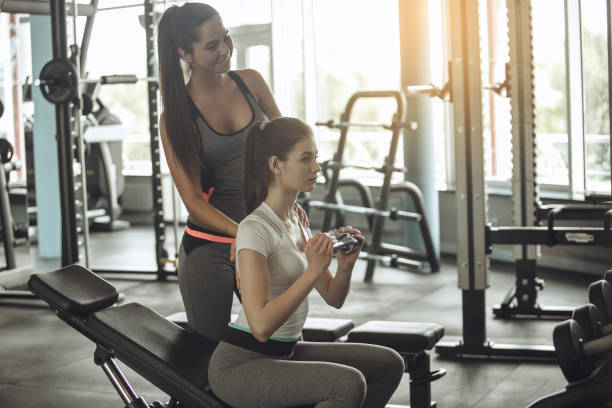In recent years, home workouts have become one of the most popular and effective ways to stay active and maintain physical fitness. Whether you are short on time, want to avoid crowded gyms, or simply prefer the comfort of your own space, working out at home offers flexibility, convenience, and results when done right. You do not need a fully equipped gym to achieve your fitness goals. With the right approach and a bit of creativity, you can build strength, improve endurance, burn fat, and enhance overall health right from your living room, bedroom, or backyard.
This comprehensive guide covers everything you need to know about home workouts, including their benefits, types, sample routines, tips for staying motivated, and how to make the most of your environment.
Why Choose Home Workouts?
Home workouts are more than a backup plan; they are a powerful fitness strategy in their own right. Here are some key benefits:
1. Convenience and Accessibility
No commute, no waiting for machines, and no restrictions. You can work out any time that suits you—before work, during lunch, or late at night.
2. Cost-Effective
There are no gym fees, and many home workouts require little to no equipment. All you need is your body and some space.
3. Privacy and Comfort
You can exercise in your own environment, at your own pace, without feeling self-conscious or pressured by others.
4. Flexibility
Adapt your workout to your schedule, goals, and available space. You can do a quick 10-minute workout or a full 45-minute session based on your needs.
5. Family-Friendly
Home workouts can be done with family members or while supervising children, making fitness more inclusive and accessible.
Types of Home Workouts
There is an incredible range of workout styles you can do at home, from strength training to cardio and flexibility routines. Here are some of the most popular types:
Bodyweight Strength Training
Build muscle using exercises such as push-ups, squats, lunges, planks, dips, and glute bridges. These require no equipment and can be progressed by adjusting reps or tempo.
High-Intensity Interval Training (HIIT)
Short bursts of intense exercise followed by brief recovery periods. Great for burning fat, increasing endurance, and saving time.
Yoga and Pilates
Improve flexibility, balance, and core strength while reducing stress. These practices are ideal for all fitness levels and require minimal space.
Resistance Band Workouts
Add resistance and challenge to your exercises using affordable and portable resistance bands. Great for toning and rehabilitation.
Dumbbell or Kettlebell Workouts
If you have some home equipment, free weights can help you target major muscle groups more intensely.
Cardio Workouts
Jump rope, dance routines, stair climbing, or bodyweight circuits can all provide excellent cardiovascular benefits.
Sample Home Workout Routines
Here are three sample routines you can try depending on your goal:
Beginner Bodyweight Workout (No Equipment)
- Jumping Jacks – 2 minutes (warm-up)
- Squats – 3 sets of 15
- Incline Push-ups – 3 sets of 10
- Glute Bridges – 3 sets of 15
- Plank – 3 sets of 30 seconds
- March in Place – 3 minutes (cool-down)
20-Minute HIIT Routine
- High Knees – 30 seconds
- Bodyweight Squats – 30 seconds
- Push-ups – 30 seconds
- Jump Lunges – 30 seconds
- Rest – 30 seconds
Repeat circuit 3–4 times
Dumbbell Full-Body Circuit
- Goblet Squats – 3 sets of 12
- Dumbbell Rows – 3 sets of 12 each side
- Overhead Dumbbell Press – 3 sets of 10
- Dumbbell Deadlifts – 3 sets of 12
- Russian Twists – 3 sets of 20 reps
Tips for Success With Home Workouts
Create a Dedicated Workout Space
Designate an area in your home where you can exercise without distractions. Even a corner of a room will do.
Schedule Your Workouts
Put your workouts on your calendar as appointments. This helps build routine and accountability.
Set Goals
Whether it’s losing weight, gaining muscle, or running a virtual 5K, setting goals gives your workouts purpose and direction.
Use Online Resources
There are thousands of free workout videos, apps, and plans available online. These can help guide you and keep routines fresh.
Track Progress
Use a notebook or app to track your reps, time, and how you feel. Seeing improvement is motivating and helps you stay consistent.
Stay Consistent, Not Perfect
Missing a day is fine. What matters is that you come back. Consistency over time is what leads to long-term results.
Equipment to Enhance Home Workouts (Optional)
Although not necessary, a few affordable tools can expand your workout variety:
- Yoga mat
- Dumbbells or adjustable weights
- Resistance bands
- Jump rope
- Kettlebell
- Stability ball
- Pull-up bar
Start with bodyweight workouts and add equipment as you progress or as budget allows.
Overcoming Common Challenges
Lack of Motivation
Try music, online classes, workout challenges, or accountability with a friend or coach.
Limited Space
Focus on compact movements. Use furniture like chairs or stairs creatively for variety.
No Equipment
Use household items like water bottles for weights, or do bodyweight-focused programs.
Time Constraints
Opt for short workouts like HIIT or ten-minute circuits that still offer significant benefits.
Conclusion
Home workouts are an incredibly effective and adaptable way to maintain and improve fitness. Whether your goal is to lose weight, build muscle, boost mental health, or simply stay active, working out at home offers everything you need to succeed. By understanding your goals, creating a routine, and staying consistent, you can transform your body and mind—no gym required.
Start small, stay consistent, and celebrate the progress you make. Every rep, stretch, and drop of sweat at home brings you closer to your healthiest self.
Would you like a custom home workout plan based on your fitness level and goals?
4o
